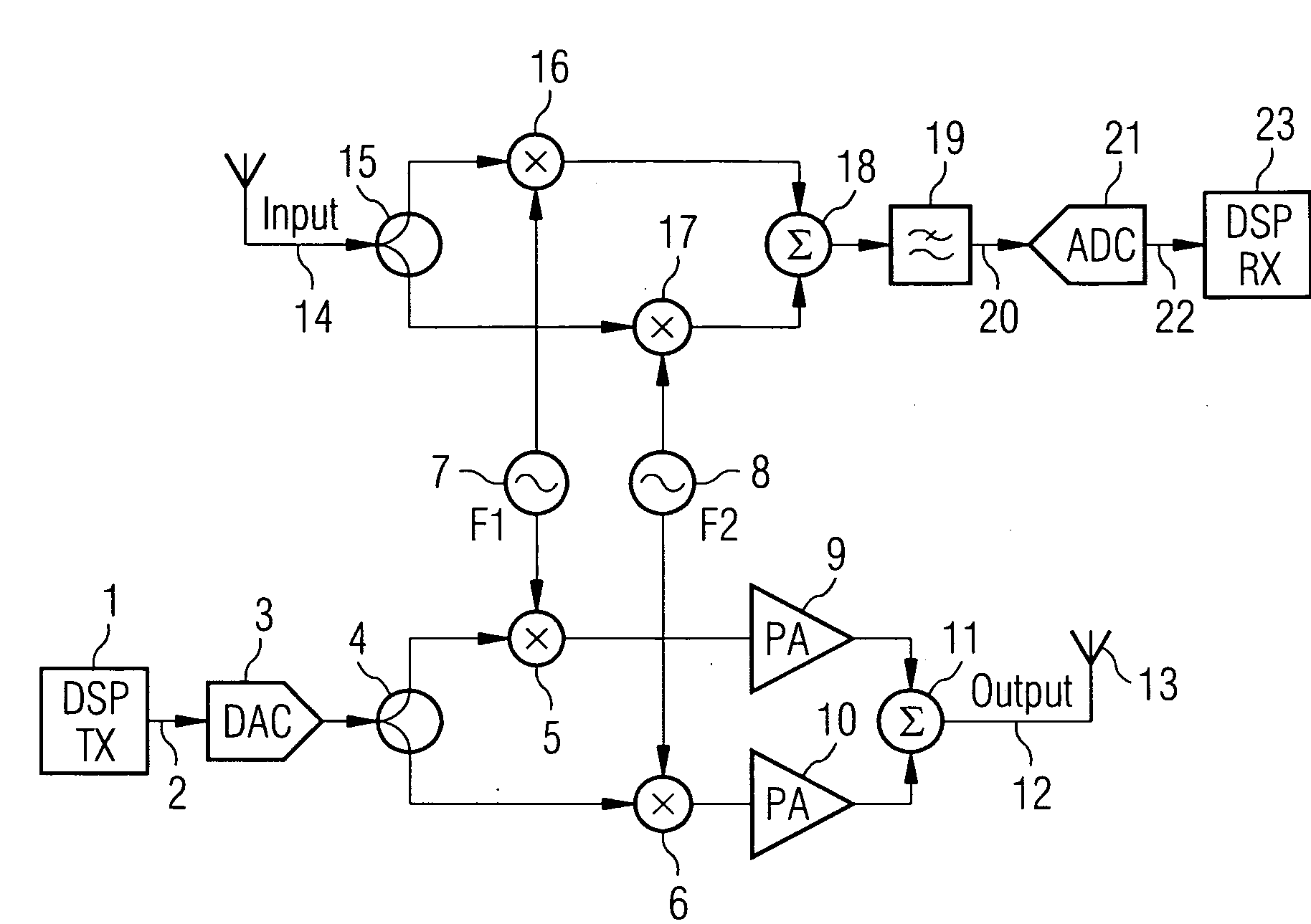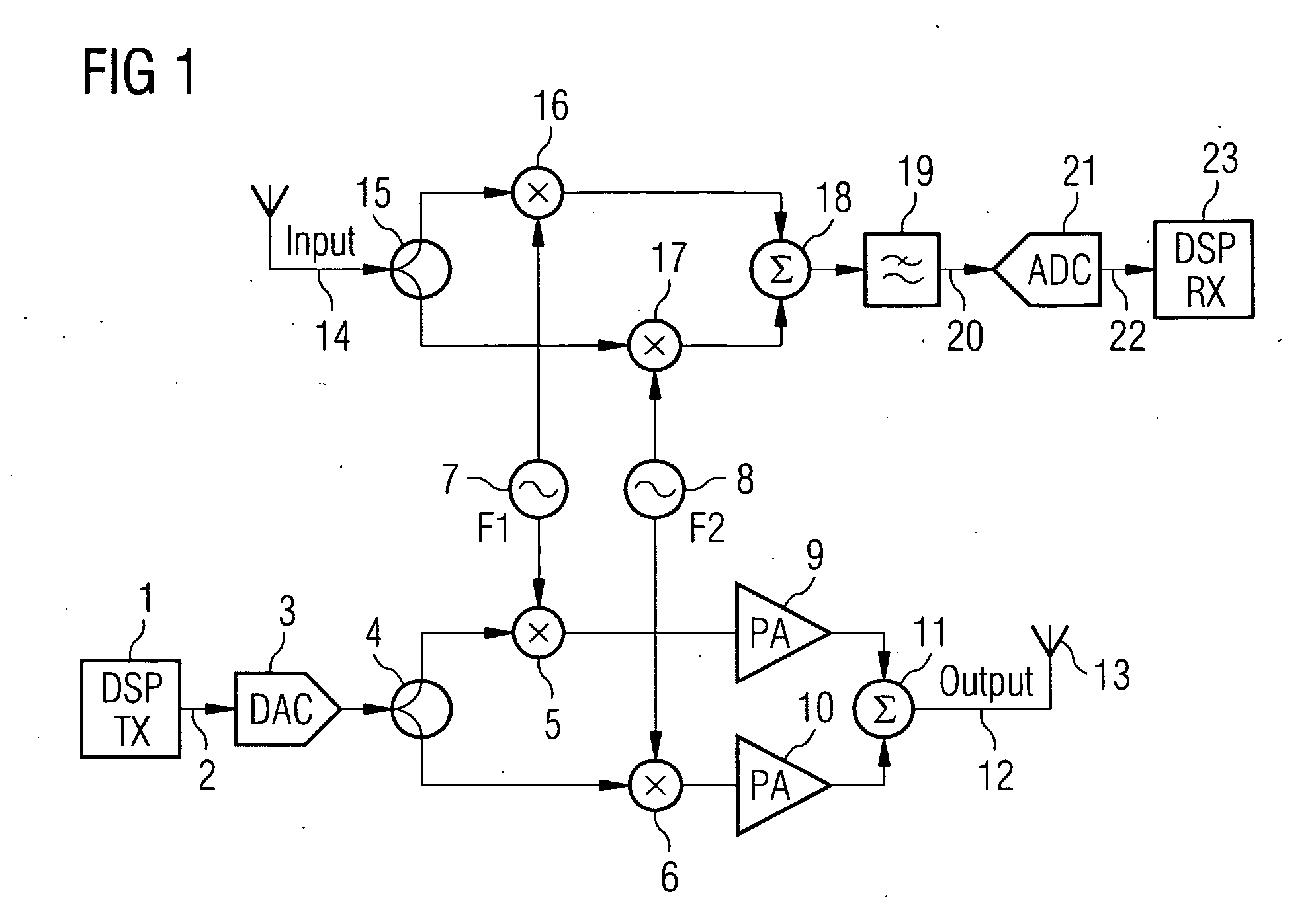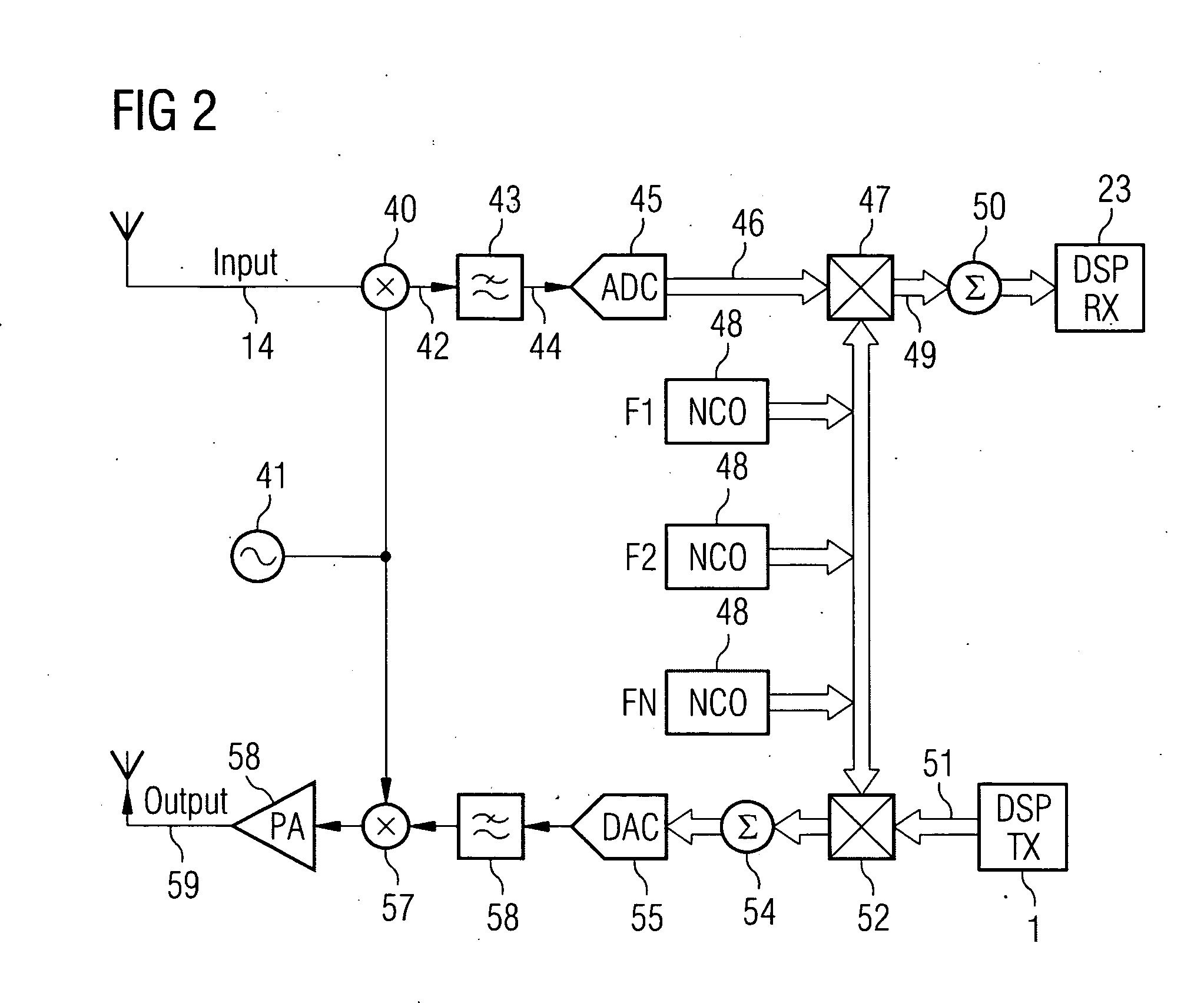RFID reader
a reader and reader technology, applied in the field of rfid readers, can solve the problem of relatively short illumination time and achieve the effect of maximising the read probability
- Summary
- Abstract
- Description
- Claims
- Application Information
AI Technical Summary
Benefits of technology
Problems solved by technology
Method used
Image
Examples
Embodiment Construction
[0032]FIG. 1 shows an example of a multicarrier reader according to the present invention in which the reader transmits and receives on two frequencies simultaneously. This example shows an implementation of the multicarrier architecture in the analog (RF) domain. A transmit baseband signal is generated in a digital signal processor (DSP) section 1 and then applied 2 to the digital to analogue converter 3. Up to this point the functionality of the multicarrier reader is the same as that in the single carrier architecture.
[0033]The baseband signal is split 4 and up-converted to F1 and F2 frequencies using two quadrature up-converters 5, 6 which are fed with F1 and F2 signals from respective local oscillators 7, 8. The up-converted signals are amplified 9, 10 summed 11 and and output 12 applied to an antenna 13.
[0034]For simplification, in FIG. 1 the complex I and Q paths are not shown separately. Each device is duplicated in the actual transceiver processing two independent, I and Q ...
PUM
 Login to View More
Login to View More Abstract
Description
Claims
Application Information
 Login to View More
Login to View More - R&D
- Intellectual Property
- Life Sciences
- Materials
- Tech Scout
- Unparalleled Data Quality
- Higher Quality Content
- 60% Fewer Hallucinations
Browse by: Latest US Patents, China's latest patents, Technical Efficacy Thesaurus, Application Domain, Technology Topic, Popular Technical Reports.
© 2025 PatSnap. All rights reserved.Legal|Privacy policy|Modern Slavery Act Transparency Statement|Sitemap|About US| Contact US: help@patsnap.com



